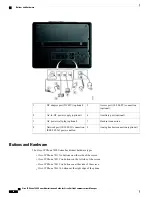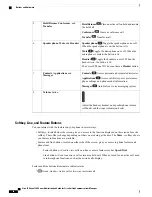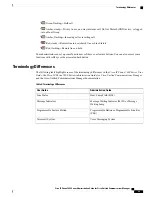
•
G.711 mu-law
•
G.722
•
G.729a
•
G.729ab
•
iLBC
•
Opus
These phones decode the following codecs:
•
G.711 a-law
•
G.711 mu-law
•
G.722
•
G.729
•
G.729a
•
G.729b
•
G.729ab
•
iLBC
•
Opus
Use of a cell, mobile, or GSM phone, or two-way radio in close proximity to a Cisco IP Phone might
cause interference. For more information, see the manufacturer documentation of the interfering device.
As with other network devices, you must configure Cisco IP Phones to prepare them to access Cisco
Unified Communications Manager and the rest of the IP network. By using DHCP, you have fewer settings
to configure on a phone. If your network requires it, however, you can manually configure information
such as: an IP address, TFTP server, and subnet information.
Cisco IP Phones can interact with other services and devices on your IP network to provide enhanced
functionality. For example, you can integrate Cisco Unified Communications Manager with the corporate
Lightweight Directory Access Protocol 3 (LDAP3) standard directory to enable users to search for coworker
contact information directly from their IP phones. You can also use XML to enable users to access
information such as weather, stocks, quote of the day, and other web-based information.
Caution
Cisco IP Phone 7811
Phone Connections
Use an Ethernet cable to connect your phone to your LAN and enable the phone's full functionality. If your
Ethernet port is equipped with Power over Ethernet (PoE), you can power the phone through the LAN port.
Do not extend the LAN Ethernet cable outside the building. For your phone to work, it must be connected to
the IP telephony network.
Cisco IP Phone 7800 Series Administration Guide for Cisco Unified Communications Manager
18
Cisco IP Phone 7811
















































